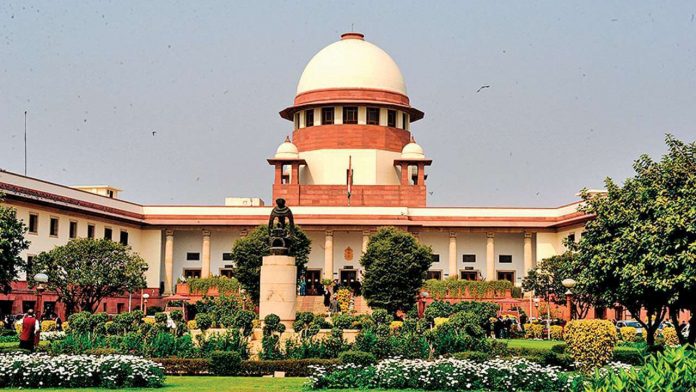This article is written by Ishika Chaubey.
Table of Contents
Facts of the case
The case was brought to Supreme Court as an appeal against the judgement of High Court. It was claimed by Gokulananda (since at the time of filing the case Gokulananda was a minor, it was filed by his uncle) that Rahasa had adopted him as a child back a registered deed. Rahasa had adopted the elder brother of Gokulananda, Narasinga by the consent of his natural father and proof for the same in the form of a registered deed was presented too, however Rahasa denied the claim of having adopted Gokulananda. The case was filed as Rahasa was allotting the property of her deceased property to a few people which was opposed by Gokulananda claiming that since she adopted him as her son, he had right over the property too. The High Court held the judgement in favour of Gokulananda. Rahasa died and the case was brought to Supreme Court by her legal representatives.
Issues Involved
The issue of the case is whether Gokulananda was the adopted child of Rahasa or not.
Rules/Law Applicable
The law applied in the given case was section 11 of Hindu Adoptions and Maintenance Act, 1956. The section talks about a few conditions that have to be complied with for an adoption to be valid and one of the condition states that for a child to be adopted he/she must be actually given and taken for adoption by the parent/guardian or any other person vested with the right along with an intent to actually transfer the child from its birth family.
Analysis
Supreme Court found that the claim of Gokulananda that Rahasa had adopted him as a child was merely by words and not supported by any documentation. Further it was found that there was no proof of Gokulananda living with Rahasa ever, if she had indeed adopted him, neighbours would have seen him during the years, but that was not the case. Also, as claimed by the uncle of Gokulananda, none of the three people present at the time of the apparent adoption of Gokulananda took place were examined by the High Court, neither was the priest who had apparently performed the adoption ceremony nor were any relatives or prominent people of the village. It could be derived that Rahasa was a well aware lady as during the time of adopting Narasinga, she had done proper documentation of the same and still had the proof. More importantly to prove that Gokulananda was adopted by Rahasa, not a single document or proof supporting the same could be presented.
The court also referred to the judgement of the case Kishori Lal v. Chaltibai which held that it is necessary for evidence to be produced as adoption results in women losing their property to comparative strangers therefore the process should be free of fraud and no place should be left for doubt.
The court applied section 11 of the Hindu Adoptions and Maintenance Act, 1956 to the facts and concluded that in order to prove the intent of the parent or guardian in giving the child to a third person for adoption, necessary documentation has to take place too and since no documentation could be produced by Gokulananda combined with the other facts that came to light, the Supreme Court set aside the judgement of High Court and held that Gokulananda is not the adoptive son of Rahasa.
I personally applaud the Supreme Court for setting aside the judgement of the High Court, Supreme Court examined all the possible angles of the case, apart from no documentation and no proof from any person, the fact that Supreme Court went beyond legal provisions and considered Rahasa to be a responsible and well aware person as she had documentation of Narasinga’s adoption is admirable.
Though the level of carelessness that the High Court showed cannot be ignored, without any proof or examining anyone, it gave the judgement in favour of Gokulananda is highly prone to criticism. There should be repercussions for High Courts exercising such level of carelessness.
Conclusion
The case had a historic judgement which was followed as a precedent for many cases later. During the time when the judgement was made, it was very common in India for people to adopt their close relative’s kids, the judgement deterred many individuals who falsely claim to be adoptive sons of couple’s especially widowed women trying to take advantage of their old age to get hold over their property.
Though the situation in today’s times are reversed, many parents’ use fraudulent means to adopt a child and there even exist many initiatives by the government to oppose such scandals from happening. However there are hardly any provisions to punish people who use fraudulent means to be claimed as the adoptive son/daughter of a person to get hold of their property. There is a need to get strict provisions to punish such people.
One thing that I found problematic in the given case was that even with absolutely no proof of any documentation the case was allowed to be perused till the Supreme Court, this should not be the case now. In today’s time when people are much more aware about documentation and legal provisions, any similar case should be decided in Trial Courts only with only exceptional cases allowed to go to High Court, this will save the time and money of both the parties as well as the courts.
Another suggestion that I believe should be incorporated is that in similar cases, the burden of proof of adoption should lie entirely on the child or whoever is filing the case on his behalf, the other parties should not be involved in daily rounds of courts unless the child is able to establish a strong case, only then the other parties should be informed about the situation and given a chance to defend their case and if the child is not able to build a strong case, the case should be dismissed as it is, it will save the other party from going through all the trouble.
Lastly, the Indian Judiciary is already overburdened with cases and in order to deter people from filing such fraudulent cases, a minimum punishment of 2 years, should be incorporated if proved that the person filed a false case because they had ulterior motives. The option of substituting the punishment with a fine should not be present as fines do not deter people.
LawSikho has created a telegram group for exchanging legal knowledge, referrals and various opportunities. You can click on this link and join:












